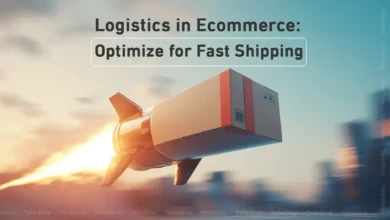components of e commerce framework: Build a Strong Store
what are the components of an ecommerce website?

components of e commerce framework has become an integral part of our daily lives. With the increasing use of the internet and social media, online platforms have become the primary means of buying and selling products and services worldwide. Global e-commerce sales are expected to surpass $8 trillion by 2027, reflecting the sector’s rapid expansion. But how can a business choose the right e commerce framework to build its online platform? This article explores the essential components of e commerce framework and how to choose the best fit for your business.
What Is an e commerce framework?
e commerce framework is a set of tools and software used to create and manage online stores. It accelerates website development and simplifies maintenance. Choosing the right framework depends on the business model, technical needs, and the level of required customization. Understanding the components of e commerce framework helps businesses align technology with their long-term strategy.
The Importance of Choosing the Right Framework
Selecting the wrong framework can result in high costs and rebuilding efforts later. In contrast, the right framework reduces development expenses and often comes with technical support, improving overall efficiency and scalability. The components of e commerce framework you choose should match your business goals and resource availability.
Types of e commerce frameworks
There are three main types of e commerce frameworks that reflect key components of e commerce framework:
1. SaaS (Software as a Service)
A subscription-based model where the service provider hosts and maintains the platform.
Pros:
- Easy to use
- No need to handle security or maintenance
- Lower upfront cost
Cons:
- Limited customization
- May lack advanced features
2. Open Source
Offers full access to source code for deep customization. Commonly used by developers with strong technical expertise.
Pros:
- Unlimited customization
- Large developer community
Cons:
- Requires technical skills
- Ongoing maintenance and higher long-term cost
3. Headless (or Vertical) Commerce
Separates frontend and backend, offering greater flexibility.
Pros:
- High customization
- Freedom to design user interfaces
- Better performance
Cons:
- Requires advanced development skills
- Can be resource-intensive to build
Read About list of all ecommerce platforms Find the Right One for You
Key Features Every e commerce framework Should Include
Regardless of the type, a strong e commerce framework should support the following features. These features represent fundamental components of e commerce framework that drive functionality and performance:
Product Management
- Flexible product listings (sizes, colors, specs)
- Inventory tracking
- Price adjustments
Payment & Shipping Integration
- Support for gateways like PayPal, Stripe
- Multiple shipping options
SEO Tools
- Meta tag editing, URL control, keyword support
Mobile Optimization
- Responsive design and fast load speeds for mobile users
Channel Integration
- Sync with platforms like Amazon, eBay, Facebook, Instagram
Security & Privacy
- SSL certification, encryption, and compliance with data protection laws
Read About e commerce in egypt: Transforming How People Shop Today
Popular e commerce frameworks
Here are some of the most commonly used platforms that reflect diverse components of e commerce framework:
| Platform | Type | Highlights |
|---|---|---|
| YallaShop | SaaS | Arabic-first platform, beginner-friendly, tailored for the MENA market |
| BigCommerce | SaaS | B2B & B2C support, multi-store management |
| WooCommerce | Open Source | Based on WordPress, flexible and customizable |
| Shopify | SaaS | Easy-to-use, many apps, good for small businesses |
| Magento | Open Source | Powerful, scalable, requires strong technical expertise |
Challenges in Selecting the Right Framework
Technical Complexity
Some platforms, especially open-source and headless, demand experienced developers.
Cost Considerations
Upfront vs. long-term costs vary widely depending on customization and hosting.
Scalability
Your chosen platform should grow with your business. Ensure it can handle more traffic, users, and products over time. These aspects tie directly to scalable components of e commerce framework.
FAQs
1. What are the major components of the e commerce framework?
User interface, product catalog, shopping cart, payment gateway, and backend server for data processing.
2. What are the components of the M-commerce framework?
Mobile apps, payment systems, product catalogs, and mobile-optimized websites.
3. What is a component of e commerce?
A key component is the payment gateway, enabling secure online transactions.
4. What is the e-framework?
The e-framework is the overall structure of technologies supporting online business, from transactions to customer communication.
Conclusion
Choosing the right components of e commerce framework is a strategic move that directly impacts growth, efficiency, and user satisfaction. Whether SaaS, open-source, or headless, the right choice depends on your business needs, resources, and long-term goals. With careful planning and the right e commerce framework, your online store will be set up for lasting success.


hiI like your writing so much share we be in contact more approximately your article on AOL I need a specialist in this area to resolve my problem Maybe that is you Looking ahead to see you
For the reason that the admin of this site is working, no uncertainty very quickly it will be renowned, due to its quality contents.
Skincare Products Online Cheap